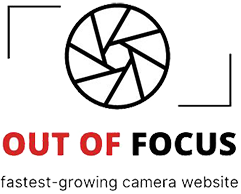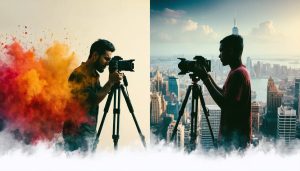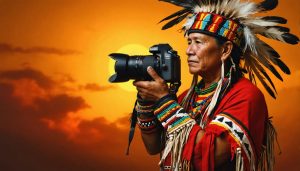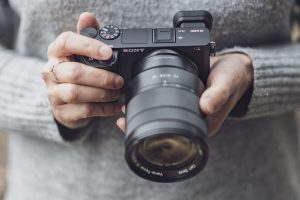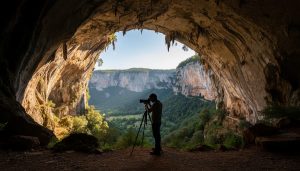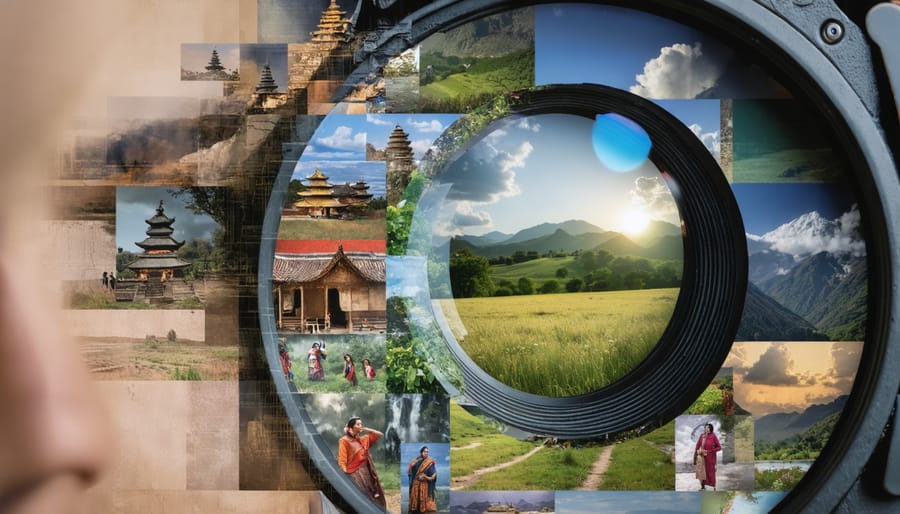
Through the lens of a camera, cultural psychology reveals itself in powerful ways that reshape how we approach photography across different societies. The Journal of Cross-Cultural Psychology has consistently demonstrated how cultural perspectives influence everything from portrait composition to documentary storytelling, making it an invaluable resource for photographers working in diverse cultural contexts.
As visual storytellers, our understanding of cross-cultural psychology fundamentally shapes how we capture and interpret moments across different societies. Research published in the journal shows that elements we often take for granted – from personal space boundaries to emotional expressions – carry vastly different meanings across cultures. For instance, what might be considered a respectful photographic distance in Western societies could be perceived as intrusive or impersonal in other cultural contexts.
The journal’s findings have particular relevance for photographers navigating multicultural environments, offering evidence-based insights into how different cultures perceive visual narratives, interpret body language, and respond to camera presence. This knowledge becomes especially crucial when documenting ceremonies, portraits, or street photography in unfamiliar cultural settings.
For photographers committed to authentic cultural representation, the journal serves as a bridge between academic understanding and practical application, providing crucial insights into how cultural psychology influences both the technical and artistic aspects of photography. This understanding helps create more culturally sensitive and meaningful visual narratives that resonate across cultural boundaries.
The Psychology Behind Cultural Photography
Visual Perception Across Cultures
Research in the Journal of Cross-Cultural Psychology has revealed fascinating differences in how people from various cultures process and create visual information. Studies consistently show that Western and Eastern cultures exhibit distinct patterns in visual perception and artistic composition.
Western observers typically focus on prominent objects and central figures, adopting an analytical approach to viewing images. They tend to separate subjects from their context and pay particular attention to individual elements. This perspective aligns with Western cultural values emphasizing individualism and personal achievement.
In contrast, East Asian cultures demonstrate a more holistic viewing pattern, taking in the entire scene and considering relationships between elements. Their eye-tracking patterns show wider scanning of images, including background details and contextual elements. This reflects cultural values prioritizing harmony and interconnectedness.
These differences extend to image composition preferences. Western photographers often employ techniques that isolate subjects, using shallow depth of field or negative space. Asian photographers frequently create images that showcase environmental context and relationships between elements.
The implications for photographers working across cultures are significant. Understanding these perceptual differences can help in creating images that resonate with diverse audiences. For instance, advertising photographers might adjust their composition style based on their target market’s cultural background, while documentary photographers can better appreciate how their own cultural bias might influence their work.
Recent studies have also shown that exposure to different cultural visual styles can enhance creative flexibility, suggesting that exploring cross-cultural perspectives can enrich any photographer’s artistic vision.
Cultural Symbols in Photography
Cultural symbols play a profound role in shaping how photographers approach their craft across different societies. When a photographer frames a shot, their cultural background influences everything from subject choice to composition and color preferences. For instance, while Western photographers might gravitate toward individual subjects and direct eye contact, many Asian cultures traditionally favor group compositions and more subtle, indirect gazes.
The interpretation of symbols varies significantly across cultures. A hand gesture considered friendly in one culture might be offensive in another, and colors carry different meanings worldwide. Red, for example, symbolizes good fortune in Chinese culture but may represent danger or warning in Western contexts. Understanding these nuances is crucial for photographers working across cultural boundaries.
Religious and spiritual symbols particularly demand careful consideration. Sacred objects, places of worship, and ceremonial elements should be photographed with appropriate respect and awareness. Some cultures may have specific taboos about photographing certain subjects or strict protocols about how religious symbols should be represented.
Modern photographers increasingly recognize how cultural symbolism affects their work’s reception by different audiences. This awareness has led to more thoughtful approaches in documentary, wedding, and commercial photography. Successful cross-cultural photographers often research local customs and symbolism before shoots, ensuring their images resonate authentically with their intended audience while avoiding unintentional cultural misrepresentation.
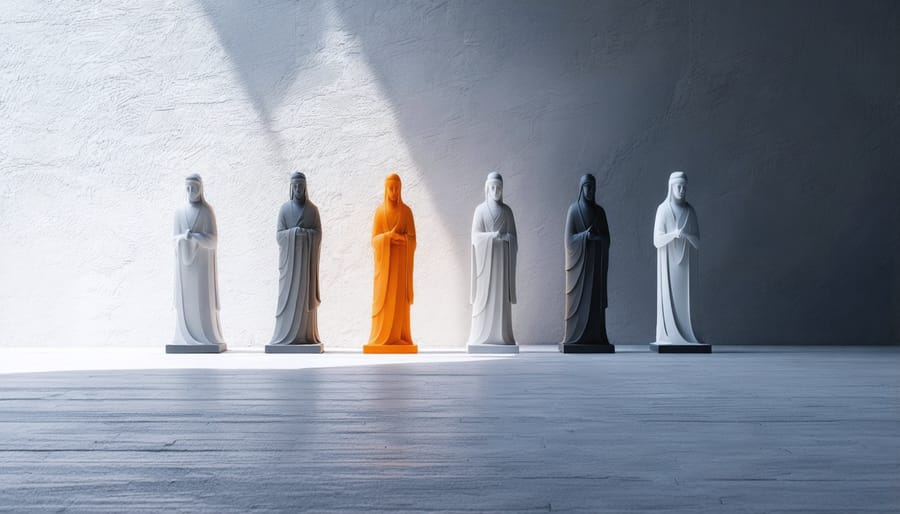
Global Photography Practices
Eastern vs Western Approaches
Cultural differences between Eastern and Western approaches to photography reflect deeper philosophical and artistic traditions unique to each region. Eastern photography often emphasizes negative space, subtle compositions, and the concept of “ma” – the meaningful void between objects. This approach stems from traditional Asian art forms where emptiness carries as much significance as the subject itself.
In contrast, Western photography typically focuses on filling the frame, creating bold compositions, and emphasizing clear subject matter. This difference becomes particularly evident in portrait photography, where Eastern photographers often place subjects within a broader environmental context, while Western photographers tend to create tighter, more intimate frames.
Subject matter preferences also vary significantly. Eastern photographers frequently draw inspiration from natural elements and seasonal changes, incorporating traditional symbols and metaphors into their work. Cherry blossoms in Japanese photography, for instance, represent not just beauty but also the transient nature of life. Western photographers, influenced by Renaissance art traditions, often prioritize human subjects and dramatic landscapes, with a stronger emphasis on individual expression and technical perfection.
Storytelling techniques differ as well. Eastern approaches often favor subtle narratives that unfold gradually, allowing viewers to discover meaning through contemplation. This might manifest in photo series that follow the changing seasons or document daily life with minimal intervention. Western storytelling in photography tends to be more direct and dramatic, often seeking to capture decisive moments or create immediate emotional impact.
These distinctions aren’t absolute rules but rather general tendencies shaped by centuries of cultural development. Modern photographers increasingly blend these approaches, creating innovative work that transcends traditional cultural boundaries. Understanding these different perspectives can enrich any photographer’s creative toolkit, regardless of their cultural background.
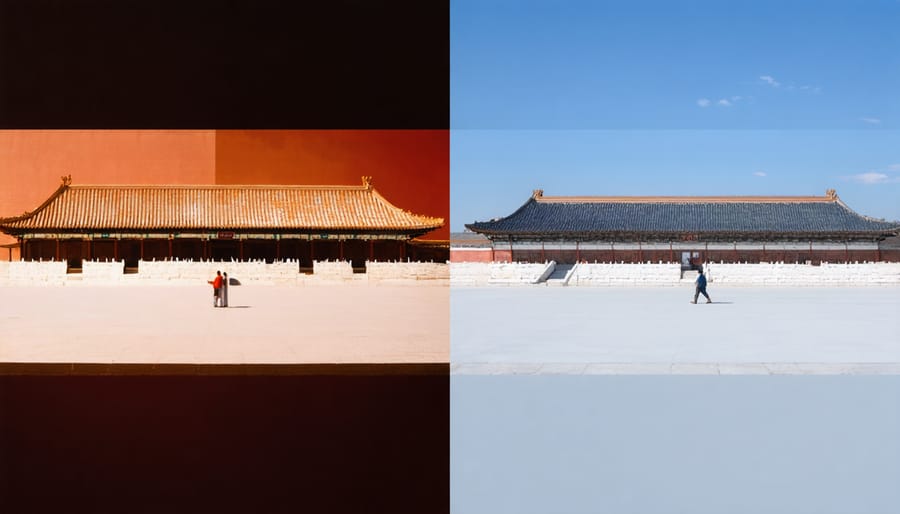
Indigenous Photography Perspectives
Indigenous communities bring unique and profound perspectives to photography, deeply rooted in their cultural traditions and worldviews. Their approach to visual documentation often differs significantly from Western photographic practices, emphasizing collective storytelling, spiritual connections, and environmental harmony. These indigenous artistic perspectives frequently incorporate elements that go beyond mere visual representation.
Many indigenous photographers view their craft as a way to preserve and share cultural knowledge, combining modern photographic techniques with traditional visual storytelling methods. This often involves careful consideration of when and how to photograph sacred ceremonies, respecting cultural protocols, and ensuring that images serve the community’s interests rather than just aesthetic or commercial purposes.
Time and seasonality play crucial roles in indigenous photography. Many communities follow specific guidelines about when certain subjects can be photographed, reflecting deep cultural understanding of natural cycles and spiritual significance. This temporal awareness creates a unique rhythm in their documentary work, quite different from the “shoot-anytime” approach common in contemporary photography.
The concept of consent and relationship-building is paramount in indigenous photography. Photographers often spend considerable time developing trust and understanding with their subjects, viewing the photographic process as a collaborative dialogue rather than a one-sided documentation. This approach emphasizes reciprocity and mutual respect, where the photographer’s role extends beyond capturing images to becoming a custodian of cultural stories.
Indigenous photographers frequently incorporate elements of their traditional art forms, such as circular compositions, symbolic color usage, and meaningful patterns that reflect their cultural heritage. These elements create a distinctive visual language that bridges ancient storytelling traditions with modern photographic techniques, resulting in powerful and culturally authentic imagery.
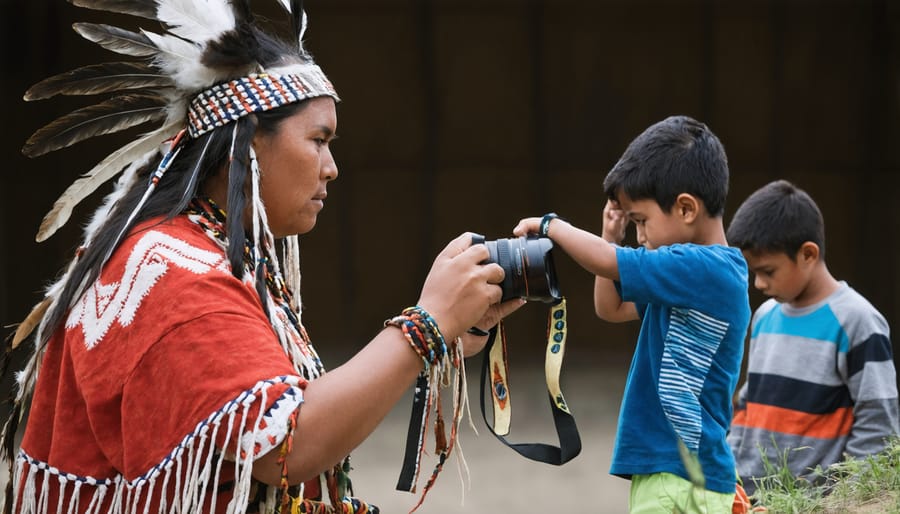
Cultural Sensitivity in Modern Photography
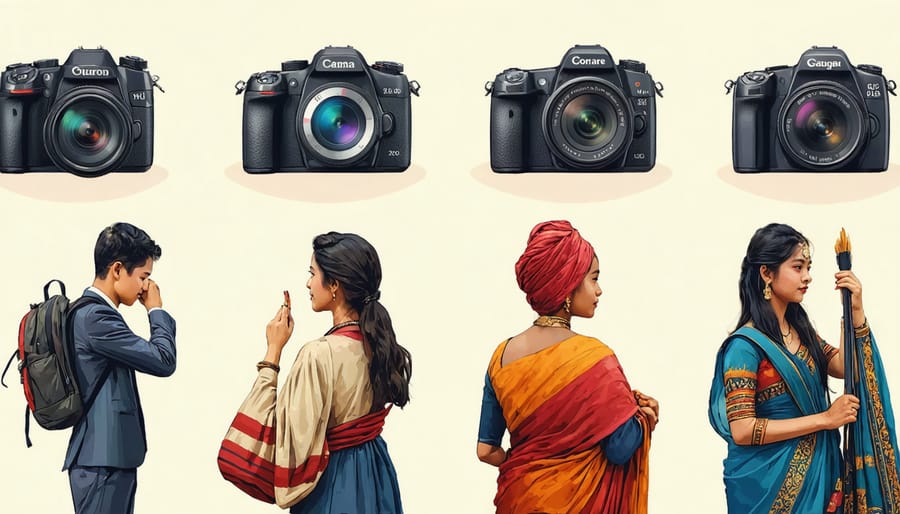
Ethical Considerations
When working across cultural boundaries, photographers must navigate complex ethical considerations to ensure their work respects and honors the communities they photograph. Understanding and obtaining proper consent is paramount – this goes beyond simply getting a quick nod or signature. In many cultures, consent may involve community leaders, extended family members, or specific cultural protocols that must be respected.
Cultural representation requires careful thought and sensitivity. As photographers, we have a responsibility to portray individuals and communities authentically, avoiding stereotypes or oversimplified narratives. This is particularly crucial when documenting human journeys and experiences across different cultures.
Cultural appropriation is another critical concern. Be mindful of sacred objects, ceremonies, or traditions that may have restrictions around photography. Some communities may have specific beliefs about photography or image-making that must be respected. Always research and understand these cultural nuances before beginning your project.
Consider the potential impact of your images on the communities you photograph. Will your work benefit them? Could it potentially harm or misrepresent them? Engage in dialogue with community members about how they wish to be portrayed and involve them in the creative process when possible.
Compensation is another important ethical consideration. While not every photograph requires payment, be transparent about how images will be used and ensure fair compensation when your work is commercial in nature. Some communities may prefer alternative forms of reciprocity, such as printed photographs or community support projects.
Finally, maintain transparency about your intentions and the intended use of the photographs. Build trust through clear communication and follow through on any promises made to subjects or communities. Remember that ethical photography is not just about the final image – it’s about the entire process of relationship-building and cultural exchange.
Building Cultural Bridges
Building meaningful connections across cultural boundaries requires a thoughtful and respectful approach, especially when working with subjects from diverse backgrounds. As photographers, our ability to bridge cultural gaps directly impacts the authenticity and depth of our visual storytelling. Understanding cultural representation in photography is crucial for creating meaningful work that resonates with both subjects and viewers.
Start by researching the cultural context of your subjects before any shoot. Learn about local customs, traditions, and social norms that might affect your interaction. Simple gestures like greeting people in their native language or understanding appropriate body language can help establish initial trust.
Effective communication goes beyond words. When language barriers exist, focus on non-verbal cues and maintain an open, respectful demeanor. Consider working with local guides or interpreters who can help navigate cultural nuances and facilitate deeper connections with your subjects.
Take time to build rapport before bringing out your camera. Share something about yourself and show genuine interest in learning about their culture. This mutual exchange creates a foundation of trust and respect that will reflect in your images.
Remember that different cultures may have varying attitudes toward photography. Some communities might have specific taboos or restrictions about what can be photographed. Always seek explicit permission and respect boundaries. If certain practices or locations are off-limits, accept these limitations gracefully.
By approaching cross-cultural photography with patience, respect, and genuine curiosity, you’ll create more authentic images while fostering meaningful connections that transcend cultural differences.
Technical Adaptations
When photographing across different cultural contexts, adapting your technical approach is crucial for capturing authentic and respectful images. Start by adjusting your camera settings to match local lighting conditions and cultural spaces. In many traditional indoor settings, such as temples or ceremonial spaces, low-light capabilities become essential. Consider raising your ISO and using a wider aperture, while being mindful of any restrictions on flash photography.
Composition rules also vary significantly across cultures. While Western photography often emphasizes the rule of thirds, many Eastern cultures prefer centered compositions that reflect harmony and balance. When photographing people, be aware that personal space and acceptable shooting distances differ between cultures. In some communities, a longer focal length lens might be more appropriate to maintain respectful distances.
Color interpretation and symbolism play vital roles in cross-cultural photography. Your white balance settings should accurately represent cultural colors, especially in ceremonial clothing or traditional art. Some cultures associate specific colors with celebrations or mourning, so understanding these meanings can inform your post-processing decisions.
For documentary-style photography, consider using neutral picture profiles that capture true-to-life colors and tones. When photographing cultural events, faster shutter speeds might be necessary for dynamic movements in traditional dances or ceremonies, while slower speeds can convey the peaceful atmosphere of meditation or prayer spaces.
Remember to always check local customs regarding photography equipment. Some communities might be more comfortable with smaller, less intrusive cameras, while others might expect professional gear as a sign of respect for their traditions.
Cultural Exchange Through the Lens
Photography has proven to be a powerful medium for bridging cultural gaps and fostering understanding between diverse communities. Several remarkable projects exemplify this potential, showcasing how the lens can capture and communicate across cultural boundaries.
The “Portraits of Humanity” project, launched in 2019, connected photographers from 15 different countries who documented daily life in their respective communities. The initiative resulted in a compelling series that challenged stereotypes and revealed universal human experiences despite cultural differences.
In Japan, the “Generation Gap” project paired elderly traditional craftspeople with young urban photographers. This collaboration not only preserved cultural heritage through visual documentation but also created meaningful dialogues between generations, resulting in a stunning exhibition that traveled internationally.
The emergence of modern indigenous photography has revolutionized how native communities represent themselves, shifting away from outsider perspectives to authentic cultural storytelling through their own lens.
The “Markets of the World” initiative brought together photographers from six continents to document local marketplaces. This project revealed how commerce, community, and culture intersect differently across societies while highlighting shared human experiences in these gathering spaces.
Digital platforms have further amplified these cross-cultural exchanges. The “Global Photo Walk” project connects photographers worldwide through simultaneous photo walks in their local communities, sharing images and stories in real-time through social media. This creates an immediate, authentic window into different cultures and demonstrates how photography can transcend language barriers.
These projects demonstrate that successful cross-cultural photography requires more than technical skill – it demands cultural sensitivity, respect, and genuine curiosity about different ways of life. They show how photography can serve as both an artistic medium and a tool for cultural preservation and understanding.
Understanding the intersection of cultural psychology and photography opens up new dimensions in our visual storytelling abilities. As photographers, we must recognize that our cultural background influences not just how we take photos, but how we interpret and present them to the world. Being mindful of cultural differences isn’t just about avoiding offense; it’s about creating more authentic, meaningful images that resonate across cultural boundaries.
The insights from cross-cultural psychology remind us that perception, emotion, and visual preferences vary significantly across cultures. This knowledge empowers photographers to approach their subjects with greater sensitivity and create more inclusive visual narratives. Whether you’re documenting traditional ceremonies, capturing street life in foreign countries, or working with clients from different cultural backgrounds, cultural awareness enhances both the process and the final product.
Moving forward, photographers should actively seek to expand their cultural understanding, engage with diverse communities, and approach their craft with cultural humility. By embracing these principles, we can create more impactful images that bridge cultural divides and contribute to greater cross-cultural understanding through the universal language of photography.
